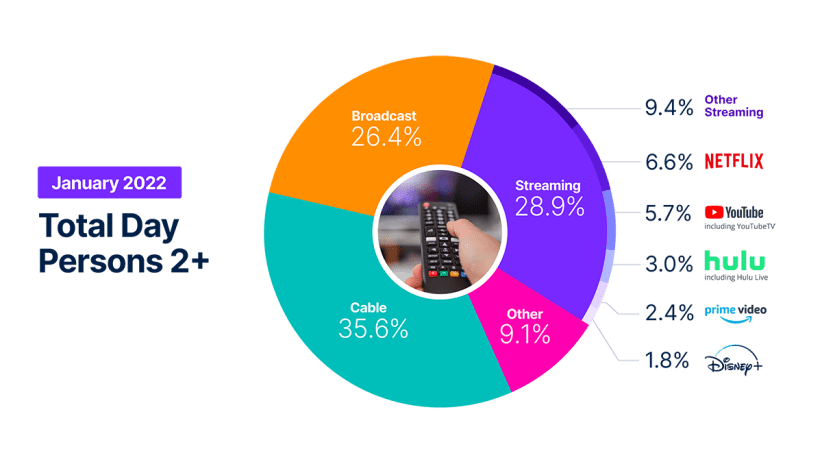Future of TV Briefing: How the TV, streaming and digital video industry spent its summer
By Tim Peterson
This week’s Future of TV Briefing recaps what transpired over the summer for TV, streaming and digital video industry.
- Summer recap
- Comcast’s TV cuts, Snap’s original programming exit, Nielsen’s big data setback and more
Summer recap
The key hits:
- Streaming steals viewership, but subscription growth slows.
- Netflix develops its ad offering.
- Programmers and producers tighten their belts.
- Short-form video platforms pinch open their wallets.
- TV advertising’s measurement overhaul ebbs.
There’s no such thing as a summer slowdown anymore — certainly not for the TV, streaming and digital video industry.
At the start of summer, questions loomed around Netflix’s advertising plans, streaming’s audience hold and how the economic headwinds at the time would affect the landscape. Meanwhile, there was also uncertainty around the TV advertising industry’s measurement shift heading into the annual upfront negotiations as well as the perpetual quandary of when short-form video platforms will start to share revenue with publishers and creators.
By the end of the solstice, some questions received answers, though some begot new queries heading into the fall and fourth quarter. For anyone who either was able to unplug over the summer or became overwhelmed with work, here is a recap of the season’s top developments.
Streaming steals viewership but subscription growth slows
Streaming is resurgent — sort of. Amid streaming’s subscriber growth deceleration in 2021, streaming’s share of TV watch time stagnated. Then, with Netflix — a bellwether as the preeminent streamer in the marketplace — reporting subscriber losses in the first quarter of 2022 and again in Q2, the concern arose of whether streaming’s rise had reached its apex.
Nope, not yet at least. With traditional TV in its offseason over the summer, streaming’s share of TV watch time finally overtook cable TV’s share in July, having already surpassed broadcast TV’s percentage, according to Nielsen’s The Gauge report. To be fair, streaming was at an advantage, including with Netflix releasing new episodes of “Stranger Things” in July.
However, subscription-based streamers are still facing some struggles. Netflix, in particular, had a summer to forget when it comes to subscriber growth, reporting in July that it had lost nearly 1 million subscribers. Meanwhile, Disney+’s U.S. subscriber growth slowed, and Peacock’s stagnated. Little wonder then that the fall seems set to be dominated by new attempts to add subscribers, with Netflix and Disney+ preparing to add ad-supported tiers and Paramount+ bundling up with Walmart.
Netflix develops its ad offering
Netflix’s summer wasn’t all bad news, though there was a period when it was unclear what news would come of its ad-supported plans. Early on, reports came out about the streamer assessing potential ad sales and ad tech partners, including Google and NBCUniversal, before Netflix announced in mid-July a dark-horse pick in Microsoft.
Following the Microsoft announcement, agency executives awaited information about what exactly Netflix planned to pitch advertisers. That wait seemed likely to extend into the fall, with Netflix and Microsoft not being all that forthcoming in initial meetings. But by the end of August, the company apprised ad buyers of …read more
Source:: Digiday





